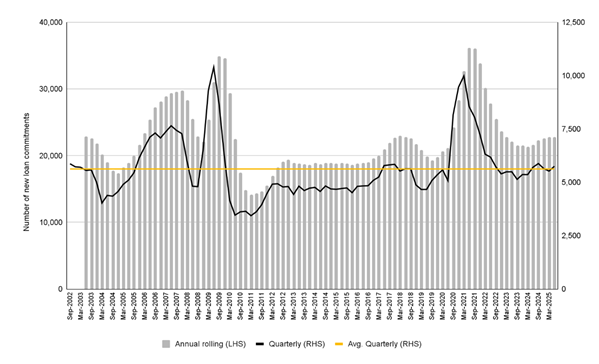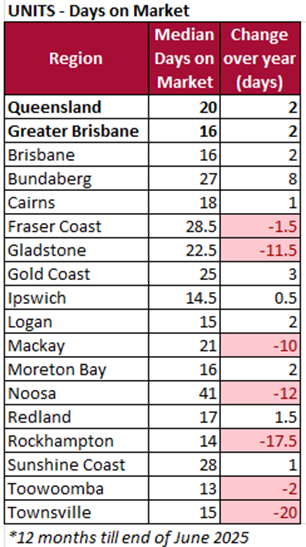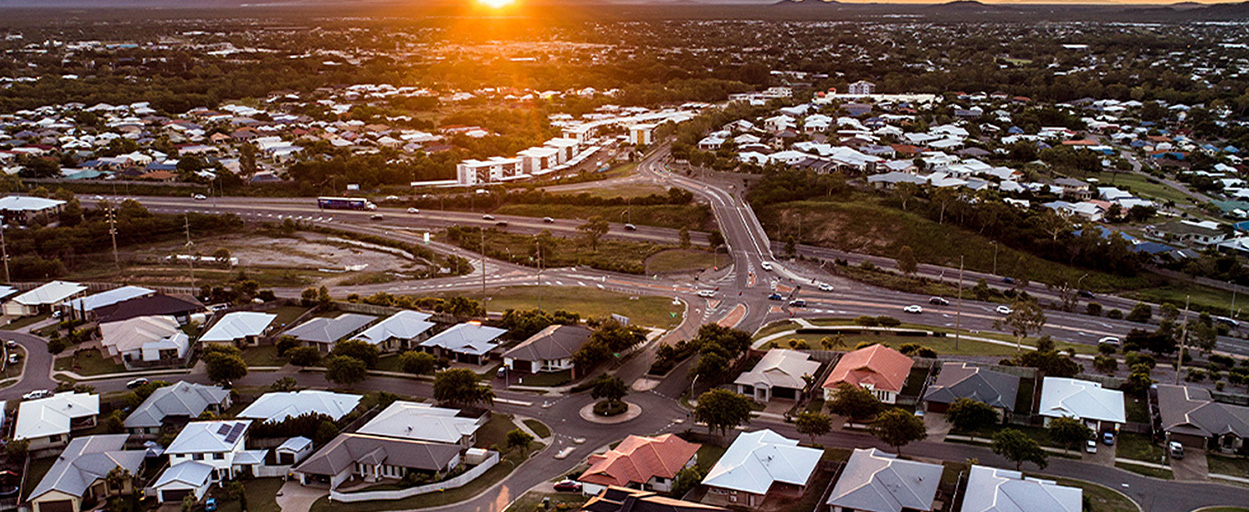- 12 Sep 2025
- 3 min read
- By Claire Ryan
Hard to keep up with Queensland’s rising property prices, says REIQ
Prices continued to rise across Queensland’s residential property markets in the June 2025 quarter (April – June 2025) with sustained growth redefining ‘entry level’ properties.
The latest median sales results released by the Real Estate Institute of Queensland (REIQ) show statewide median sales prices for houses rose 3.66% to $850,000, and similarly, units lifted 3.41% to $698,000 over the quarter.
As an upcoming Olympic City, Brisbane’s quarterly lift for houses was an impressive 4.10% to $1.27 million but was bested by growth in Ipswich of 4.19% to $771,000 – who got gold.
Over the June quarter, Gladstone (up 3.64% to $570,000), the Gold Coast (up 3.36% to $1.23 million), and Logan (up 3.14% to $820,000) rounded out the top five for houses based on quarterly growth rates.
However, when taking a broader view and looking at annual growth, yet again, Queensland’s regional areas were the standouts – Rockhampton led the charge with a remarkable 24.25%, followed closely by Townsville (24.18%), Gladstone (24.14%), and Mackay (23.47%). These figures are well above the annual median house sales growth for Greater Brisbane (8.98%) and Queensland (10.96%), which nonetheless are strong results.
Regarding units, Toowoomba was the standout this quarter with an 11% surge in its median unit price, reaching $540,000. Fraser Coast (10.35%) and Bundaberg (7.34%) also showed solid quarterly results.
When it comes to annual unit growth, Townsville topped the state with 26.04% to $380,000, followed by Logan (23.81%) and Gladstone (22.86%), with Rockhampton, Toowoomba, Moreton Bay and Ipswich not far behind - all around the 20% growth mark.
REIQ CEO Antonia Mercorella said the data demonstrates the enduring stamina of the housing market right across the state.
“Queensland continues to be an attractive, ‘picture perfect’ place to live, work, play and invest – we have the Olympics on the horizon and a robust economy underpinned by primary industries and a diverse range of other sectors, including manufacturing, film production, professional services, and science and technology, among others,” she said.
“Particularly in our regional housing markets, first home buyers are seeing more opportunity and relative value, while investors are also attracted to the strong rental yields compared to capital cities [1].
“The latest quarterly data shows the property market in the Sunshine State continues to perform strongly – good news for those already in the market, but potentially quite daunting for the next generation.”
Ms Mercorella acknowledged first home buyers were needing to stretch further and were often seeking support from parents or Government schemes to get into the market.
“While it’s important to remember these are median prices, that may offer little comfort for first home buyers who feel the first rung of the property ladder is slipping out of reach,” Ms Mercorella said.
“There are some glimmers of hope – we’ve seen a wave of support initiatives from Governments focused on first home buyers, while supply side efforts kick into gear.
“It’s now over one year since the stamp duty concession threshold in Queensland was raised in full for existing homes to $700,000 and partially up to $800,000, and four months since stamp duty was abolished for first home buyers of new builds and land in our state. The $30,000 First Home Owner’s Grant for new builds was also extended.
“And there’s more hope on the horizon - it didn’t take long for a state shared-equity home ownership program called Boost to Buy to be oversubscribed with expressions of interest from Queenslanders hoping to get help in closing the deposit gap.
“Similarly, at a Federal level, the expanded Home Guarantee scheme [2] has been brought forward to commence next month, 1 October, with property price caps in Queensland increased to $1 million for Brisbane and regional centres, and $700,000 outside of this.
“Despite property prices climbing and the first step onto the property ladder getting harder, lending data indicates that first home buyer loan commitments in Queensland over the past year are actually increasing and is now sitting just above historical averages.
“Recent reductions in the RBA cash rate have contributed to improved market sentiment and borrowing power for many, but the shortage of new homes continues.”
ABS Lending Indicators data (Figure 1) shows that there were 22,817 new loans for first home buyers (owner occupiers) in Queensland in the 12 months to June 2025, an increase of 5.7% compared to the previous period. First home buyers’ new loans increased by 4.1% in the last quarter. It also increased by 0.7% between the June quarter of 2024 and 2025.
Ms Mercorella said despite there being universal agreement that more housing supply is the answer, and irons in the fire to deliver that supply faster, these efforts were yet to sufficiently move the dial on dwelling completions.
“On the supply side, the recent Federal economic roundtable resulted in some red tape reductions - non-essential changes to the National Construction Code will be paused for the next four years, and assessments of 26,000 homes awaiting approval under the EPBC (Environment Protection and Biodiversity Conservation) Act will be fast-tracked,” she said.
“Meanwhile, the state’s $2 billion Residential Activation Fund is helping Councils deliver regional plans with the critical trunk infrastructure needed to unlock housing, and planning scheme improvements are underway to speed up assessment timeframes.
“Levers are being pulled but we’re still waiting to see this reflected in dwelling completions data.”
The Australian Government’s National Housing Accord targets the delivery of 1.2 million new, well-located homes over five years (July 2024 to June 2029). This translates to around 49,300 new homes per year in Queensland. Total dwelling completions reached around 33,700 over the 12 months to the March quarter of 2025, which is 32% below the target. [3]
Figure 1. First home buyers' new loans, QLD, June quarter 2025, seas. Adjusted

Source: ABS, Lending indicators.
Houses data

Unit data

Days on market


- Insights derived by the Real Estate Institute of Queensland based on Cotality Data.
- A median sale price is derived by arranging a set of sale prices from lowest to highest and the selecting the middle value within this set (i.e. the 50th percentile, where half of recorded sales were less and half were higher than the median).
- Only suburbs and regions to record sufficient sales numbers (at least 10 sales for the quarter) at the time of reporting are considered statistically significant.
- Days on market is calculated as the median number of days it has taken to sell properties (from first advertised date to contract date) by private treaty during the last 12 months (excludes auction listings and listings where an asking price is not advertised).
ENDS
Media enquiries:
Claire Ryan, Media and Stakeholder Relations Manager, The Real Estate Institute of Queensland
M: 0417 623 723 E: media@reiq.com.au
Read another media release from the REIQ: From panels to poolside: LIFT Conference combines learning and luxury.
Or browse our media releases.
[1] Cotality's Regional Market Update, August 2025, for example, Rockhampton had a 5.1% gross rental yield in July 2025, Townsville (5.0%), Gladstone (5.3%), and Mackay (5.7%), versus the Australian combined capitals with 3.5%.
[3] ABS (2025), Building Activity, Australia
You may also like
View All Articles
View All Articles


Start your Real Estate Career
Need help? 1300 697 347 or contact us




